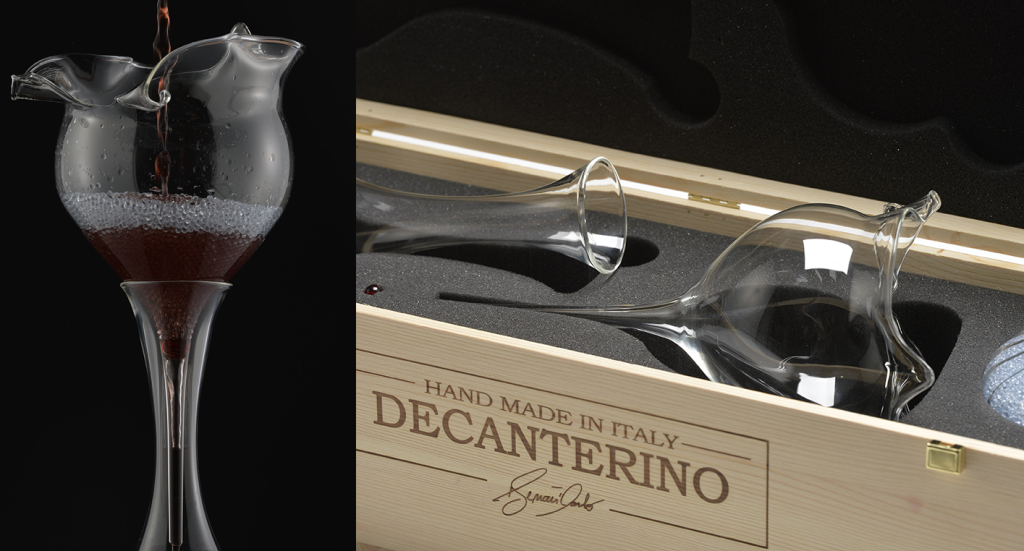The Wine Design company of Verona has recently patented at an international level a “microspheres system” project which includes an innovative line of accessories for tasting and celebrating wine. The founding feature of the patent is the use of glass microspheres when pouring wine with the aim of having a product ready for tasting more quickly.

The legal representative of the company, Arch. Carlo Benati, has signed a research agreement with the Department of Civil, Environmental, Territory and Architecture of the University of Parma (DICATeA) for the “experimental determination of hydraulic parameters of the porous medium and the operating principles of an apparatus suitable for the oxygenation of wine “. The devices under study consist of a glass casing in the shape of a goblet containing a porous medium that is precisely composed of glass microspheres.

The tests were aimed at determining, experimentally, the main hydraulic parameters of the artificial porous medium and to reconstruct the characteristics of the motion within the mass itself together with the corresponding filling dynamics and emptying times. In order to evaluate the functioning of the system and its effectiveness, where possible, a correlation has been established between the hydraulic dynamics of the experimental apparatus and the contextual phenomena that may favor the evolution of the fluid in question.
In particular, the behavior of the glass microspheres of different diameters was analyzed, experimentally evaluating the porosity and permeability of the porous medium, giving indications about the mechanical filtration to which the fluid is subjected and determining with an appropriate experimental apparatus made at the DICATeA the water retention curves of the filter mass. The latter have made it possible to establish, among other things, the irreducible water content inside the porous mass, i.e. the quantity of fluid inevitably trapped in the matrix and the pressure regime to which the fluid is subjected during all stages of filtration through the glass microspheres matrix.

Then analyzes were carried out on the filling dynamics and the emptying times of the glass. The presence of the solid matrix in the porous medium determines a more or less complex tortuous path of the moving liquid particles. It can be assumed that the presence of the glass microspheres causes a continuous fractionation and rejoining of the flow lines which as a consequence generates a transversal dispersion of the liquid. As a result of this phenomenon, the liquid undergoes a stirring along the path which can result in a more uniform distribution of the properties of the fluid itself (concentrations and / or temperature). In spite of the mixing phenomena, the average flow rate is of the laminar type since the speeds are sufficiently low and such as not to trigger turbulence. During the imbibition phase, the dispersive phenomena greatly increase the contact surface between the liquid molecules and the solid matrix, thus favoring the interaction with the gas phase initially present to occupy the pores.


